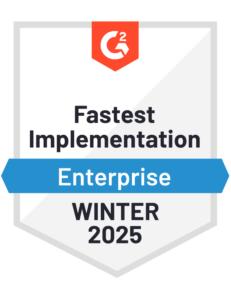Why the Manufacturing Office of Finance Should Adopt an Industry 4.0 Mindset
Blog post
Share
The manufacturing industry has always been forward-thinking in its approach to adopting new technology and more efficient processes. From the introduction of Henry Ford’s assembly line to the usage of containerized shipping systems, the willingness to continuously change brings down costs, improves efficiency, and makes an organization more competitive.
Over the past few years, manufacturing organizations have continued this tradition, but on a new frontier. Most recently, the manufacturing industry has moved their focus towards digital technology and pushed their willingness for technology adoption to its apex.
Industry 4.0
Today, the manufacturing industry finds itself in the midst of a fourth industrial revolution. Better known as “Industry 4.0”, this revolution emphasizes a need for digital technology in the form of interconnectivity through the Internet of Things, access to real-time data, and the introduction of cyber-physical systems. This new technological revolution offers a more comprehensive, interlinked and holistic approach to manufacturing. Additionally, its focus on connecting the physical aspects of the industry with the digital aspects allows for better collaboration and access across departments, partners, vendors and people.
Full implementation of Industry 4.0 equipment and practices has been slow. It was seen by many as a major capital investment that would not guarantee an outcome that justified the cost. However, organizations that have made the initial jump have become far more efficient and profitable than their competitors. This focus on new technology, and the benefits that it brings, has not been felt throughout the entire organization though. While everything from logistics to procurement has been, or has begun to be, transformed, one business department in particular has been left behind.
The Office of Finance
While the tools utilized by the rest of the manufacturing industry might be updated annually, or even bi-annually, the office of finance still relies heavily on manual processing and spreadsheet usage in order to complete the Record to Report process. Technology that was designed more than 30 years ago to manage the budget of a four-person household is now being utilized to manage the financials of multi-billion-dollar titans.
While organizations have been able to perform the bare minimum of their financial processes with this tool, it’s well known that this approach comes with a lack of visibility and confidence in the overall reporting. Recent studies confirm that 90% of spreadsheets have errors, and this erroneous data has become the foundation with which organizations complete their Record to Report process.
However, by applying the Industry 4.0 mindset into the office of finance, accountants can be empowered to bring new levels of value to the overall company. With the technology available today, like Robotic Process Automation (RPA), the office of finance can significantly add to the organizational value alongside the other business departments who have been enabled with modern technology.
What Automation Means for the Manufacturing Office of Finance
By mirroring the mindset and best practices of the rest of the organization and adopting financial automation and RPA technologies into the office of finance, the organization as a whole gains a much greater competitive edge. Removing the manual aspects of the office of finance allows accountants to focus on higher-value tasks such as data analysis or forecasting. Finance and accounting teams that have adopted automation have already realized the following benefits:
- 75% reduction in time preparing and reviewing journal entries
- 90% reduction in number of accounts to be reconciled
- 99% reduction in preparation time on reconciliations
- 30% reduction in time preparing and completing close tasks
- 60% reduction in internal audit effort
“Sanofi selected Trintech’s SAP-certified solution, Cadency, to underpin its financial transformation objectives. This has led to improved productivity for over 2,300 users as of 2020, increased compliance for more than 2,505 accounts, elimination of manual processes, and increased visibility for upper-level management.” – Sanofi
Read our white paper to learn more about how automation can benefit the manufacturing office of finance.
Written by: Caleb Walter







